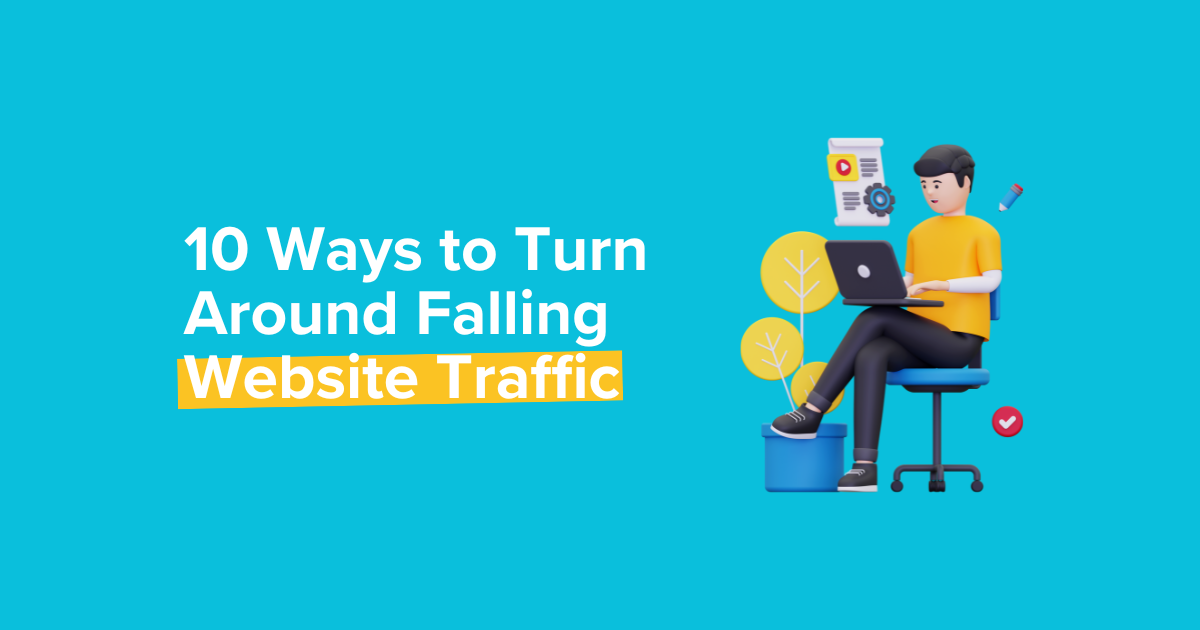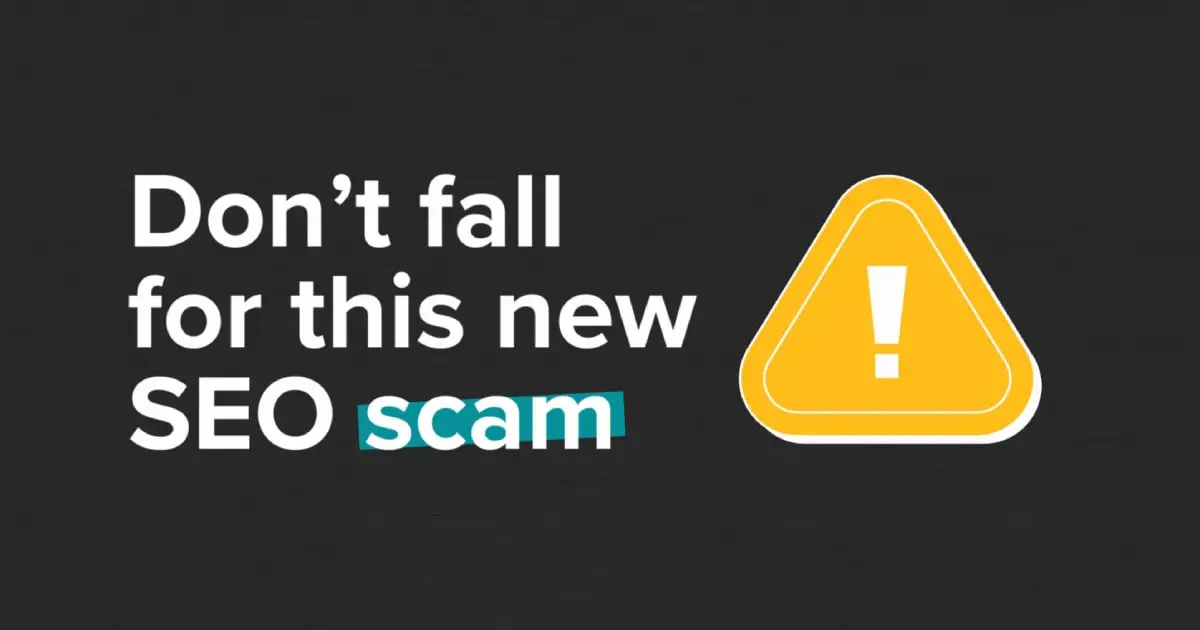


In a global market where competition is around every corner and easily accessible, a website is an essential tool for attracting customers in order to help your business grow.
Once you log onto Google Analytics and meet an unexpected noticeable decline in traffic, most marketers (understandably) tend to panic. This is because decreases in traffic are never good news and if left unaddressed, they can be extremely damaging to your business. However, with the right tools and a systematic strategy, you can uncover the reasons behind the decline and survive any traffic drop.
Mel Gibbons
14 January, 2021

If you’ve noticed a decline in website traffic, the first thing to do is keep calm. Panicking and making a rash decision without fully understanding the reason behind the changes won’t fix the problem — and certainly won’t lead to success.
We’ve put together ten easy steps that you can follow that will help you to dive deep and determine the source or sources of the problem. Take a breath, grab a cuppa and make your way through the following steps.
Your website traffic originates from various sources and understanding how customers are finding your website is essential. Begin by checking your traffic channel to find out which is failing you. These channels include:
Organic search — Visitors who come to your site from unpaid or organic search results.
Direct — Visitors who navigate directly to your website by typing your URL into a browser and those who have no traceable referral source.
Paid search — Traffic from the audience who visit your website from paid Google Ads and AdWords campaigns.
Social — Visits from social networks such as Facebook and Twitter among other social media platforms.
Referrals — People who find your website from another site by clicking on a link.
Other advertising — Including traffic from email, affiliate marketing campaigns and display advertising.
With this information, your digital marketing agency can determine why some channels are underperforming and focus efforts on rescuing them to drive more traffic.
Google’s mission is to essentially serve its users with access to accurate information and unique content. When it doesn’t rank your website as high as you expect, it means that your target audience cannot find you, resulting in reduced traffic.
The next approach that you should take is to determine if Google has penalised you. Google can penalise your website either manually or automatically. With manual penalties, they will notify you directly, but you may not always know when the harm results from algorithm changes.
These are the most common reasons for web penalisation by Google that affects ranking and traffic:
To overturn the penalties, you must fix these issues with your site and wait patiently for the next algorithm updates.
Let’s face the truth, if your website is hard to use, has poor content and doesn’t add value, then no one is going to visit it.
To improve the user experience you must enhance the customer’s overall satisfaction achieved when visiting your website. Your online space should be beautiful, useful, and easy to use to attract more traffic.
To increase the chances of visitors continuing to visit your site time and again, you should focus your efforts on providing a great user experience. Here are some useful elements common among websites that are getting their UX right.
Responsiveness and easy navigation — Make every single click on your site matter by utilising a logical website structure that doesn’t require too much navigation to find content. If it’s too hard to find what they are looking for, users will quickly find another website that provides them with a seamless experience.
Relevant information to search queries — Keep in mind that search engines offer the best results based on user queries, and if you are not providing relevancy, your site will not be found.
To be realistic, there is a possibility that you may be losing traffic to your competitors.
Identify which of your competitors were not outranking you before. If you identify any that have started to outrank you, revisit appropriate SEO strategies that will help you overtake them and regain your audience back.
Undertake keyword research to find out the most profitable and relevant keywords that your rivals are using to stay ahead. Leverage Google’s keyword research tools and on-page optimisation of newly found keywords.
It’s also important to understand that search engine algorithms are constantly changing and your competitors might be one step ahead of you because they are well-informed about the latest SEO strategies.
Familiarise yourself with the approaches your competitors are using to rank better, such as articles, press releases or link exchanges and leverage from them. Check sites linking back to their website and try to get similar links from the same source to your website.
Backlinks are a significant aspect of any Search Engine Optimisation (SEO) strategy that will maximise your Google ranking and traffic. However, only high-quality backlinks will help you achieve this. If your referral traffic is not doing well, check your backlink profile to determine whether you have lost your high-quality backlinks. If you have, one reason may be that spammers succeeded in taking down your links. So, the first thing to do in this case is to contact sites that link back to yours to confirm what is happening.
If the problem is solved, adopt measures to protect your best backlinks. You can use tools that track your backlinks and alert you when your website loses or adds new vital backlinks. Otherwise, don’t panic about losing bad backlinks as Google can penalise your website ranking. Also, as you track your backlinks, remember to remove the bad ones.
If you’re running both organic and paid marketing campaigns, you may have noticed a considerable drop in your organic traffic. If you have, now is the time to hit the pause button on your PPC ads before you waste your budget and lose organic visitors. Although pausing your Google ads can be beneficial, it is important to be aware that there are some negative impacts if you do this regularly.
If you fear risking the good performance of your paid ads by pausing them, you can tweak your ads schedule instead. Use the ad schedule in your PPC platform to choose the hours and days of the week that your paid advertisements will display. This will reduce their impacts on organic traffic while enjoying the benefits and conversions of your paid ads.
Gone are the days of writing content that you feel is right for your audience. With continually changing user behaviour and needs, whatever you put on your digital platform should reflect the latest industry trends. If it doesn’t, your work will run the risk of not being found by search engines. That’s why updating your keyword research strategy is essential to attract traffic. Contemporary keyword approaches are far more demanding than they used to be. Take your time and understand your company goals, priorities and audience behaviour in order to develop strong content that drives a successful keyword strategy.
Now that you have the right keywords, how they are used on your site is an essential focus. If you want to boost your organic search and traffic, optimise your website with relevant content and keywords.
In addition to high-quality content, on-page SEO includes your title, metadata, header and image HTML tags. Getting these right will ensure your website elements are visible to search engines and your users. Finding the ideal digital marketing agency for your SEO services in Adelaide will cast a light on your on-page strategies, help you boost your online traffic and raise your search presence.
Do you know Google algorithms are updated more than once every day? These updates are related to the way search engines rank website content to drive organic traffic and are designed to improve user experience. Your website may be experiencing a decline in traffic due to algorithm updates which have caused your website to rank poorly. Your digital marketing service company should stay up to date with the current Google algorithms and are best placed to address this issue. Staying informed about what’s currently being penalised by Google will help your site stay safe and continue performing well. Carrying out frequent potential fixes on your site will enhance your ranking on Google’s new algorithms.
Social media platforms are fast becoming one of the most critical aspects of digital marketing — this is largely due to the ever-increasing number of handheld devices. If you’re not using this profitable tool for social media marketing in Adelaide, you are missing an incredible opportunity.
When compared to the remaining steps outlined here, social media is the easiest and least technical way to increase your website traffic. You’ll find that a vast majority of your customers will be online, hence posting your content on social media platforms provides users with a good reason to click through to your website. Businesses that share their content online also have higher chances of securing a successful ranking.
There are many solutions that will address decreasing website traffic, but at the end of the day, audiences are drawn to sites that offer excellent user experience and useful and relevant content. Any approach you take should first focus on these fundamental aspects.
Join hundreds of businesses boosting their knowledge with our monthly insights.
Contact us for an online marketing solution to build your brand and grow revenue.
Contact Us 1300 055 000
1300 055 000

